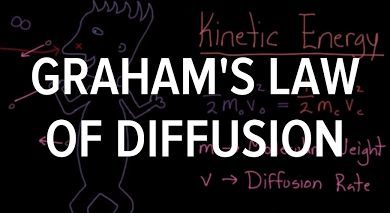Kinetic Molecular Theory of Gases formula & Postulates
We have discussed the gas laws, which give us the general behavior of gases. These laws are based on experimental observations and they are almost independent of the nature of gas.
If we want to discuss the behavior of gases quantitatively, then we should appreciate the kinetic theory of gases given by Bernoulli in 1738.
[wp_ad_camp_1]
He was the first person who proposed that the pressure of the gas is due to the collisions of the gas molecules at the walls of the vessel.
These proposals of Bernoulli led Clausius (1857) to derive the kinetic equation. From his kinetic equation of gases, he was able to derive the gas laws.
This theory was elaborated and extended by Maxwell, Boltzmann, and Van der Waal.
Postulates of Kinetic Molecular Theory
- The gases consisted of tiny particles called molecules. It means that gases like He, Ne, Ar etc are said to be monoatomic gases.
- The molecules of a gas move randomly, collide among themselves, collide with the walls of the vessel and change their directions.
- The pressure on the walls of the vessel is due to collisions on the
- The collisions of the molecules among themselves and on the walls of the vessel are perfectly elastic.[wp_ad_camp_2]
- The molecules of the gases are widely separated from each other at ordinary temperature and
- There are no forces of attractions among the molecules of the
- The actual volume of the gas molecules is negligible as compared to the volume of the vessel.
- The force of gravity has almost no influence on the molecules of the
- The kinetic energy of the gas molecules is proportional to the absolute temperature of the gas.
Mathematical Derivation of Kinetic Equation of Gases
Let us consider a certain mass of gas in a cubic vessel of length l. The total number of molecules in the vessel is ‘n’. The mass of each molecule is ‘m’. The individual component velocities along x, y, and z-axis are u, v and w respectively. These motions are shown in the Fig. (1.3).

